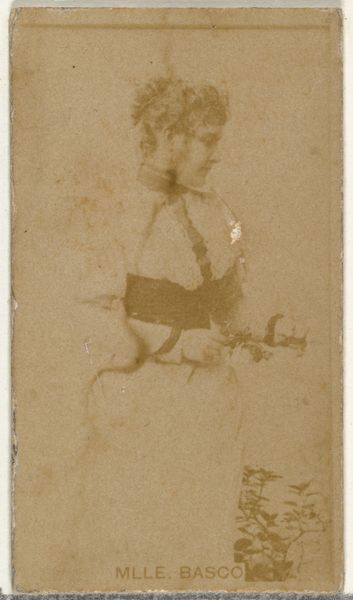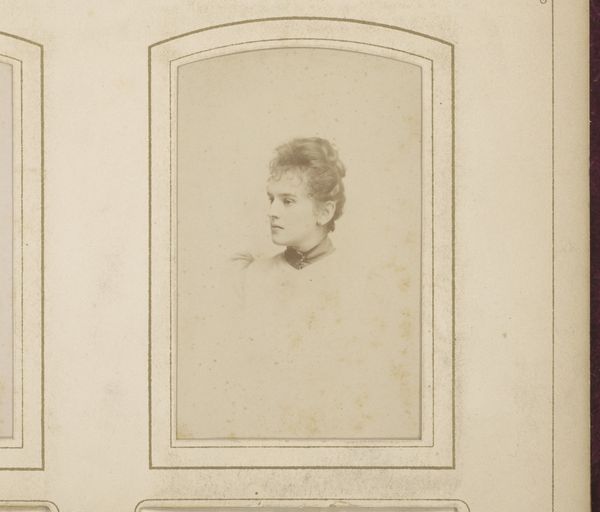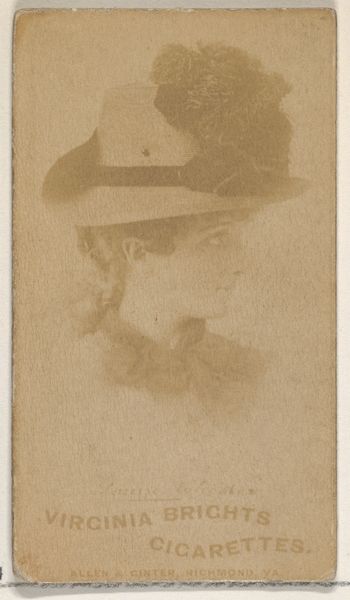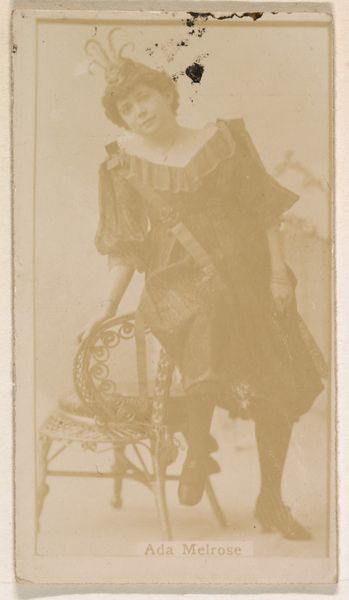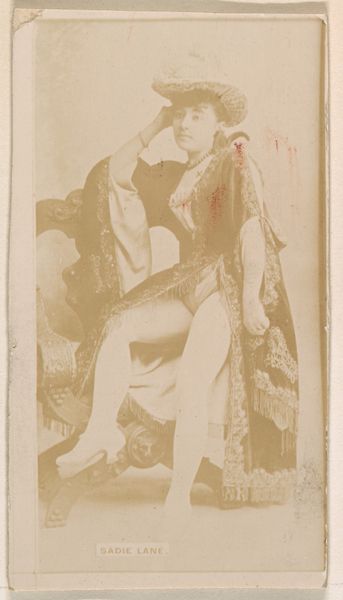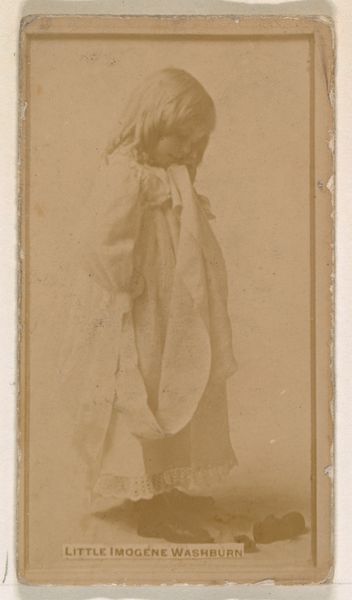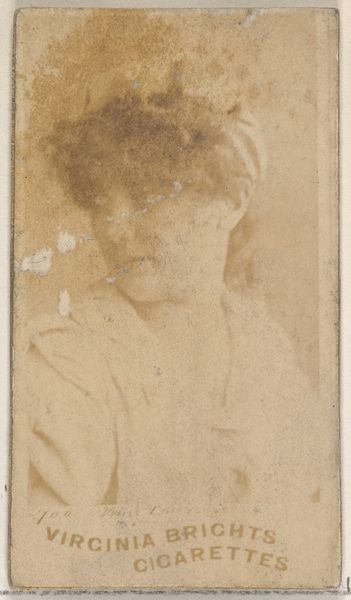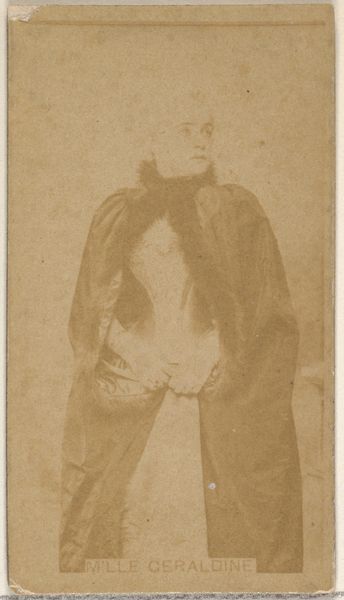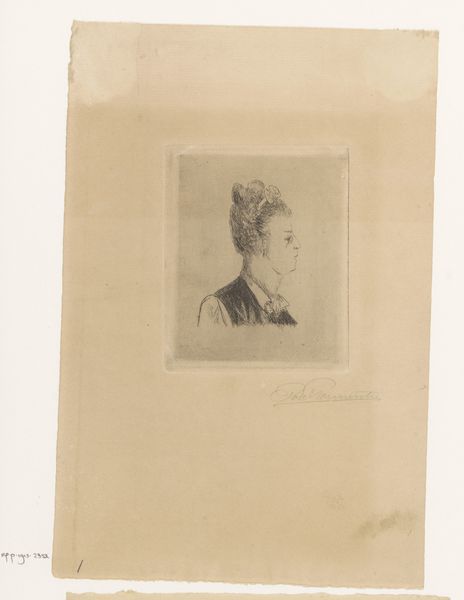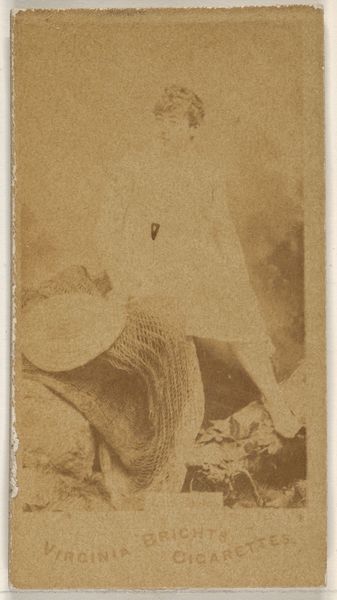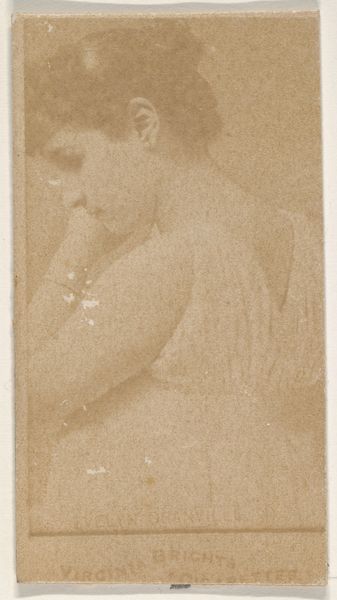
Portrait of Talbot's Wife (Constance) or Half-Sister (Caroline or Horatia) c. 1842
0:00
0:00
daguerreotype, photography
#
portrait
#
16_19th-century
#
daguerreotype
#
photography
#
portrait reference
#
england
#
romanticism
Dimensions: 6.1 × 4.3 cm (image); 25.4 × 21 cm (paper)
Copyright: Public Domain
William Henry Fox Talbot made this salted paper print, a “photogenic drawing,” in England, sometime in the 1840s. The sitter is either Talbot’s wife Constance, or his half-sister, Caroline or Horatia. In this period, photography was not simply a scientific development, but a cultural force that quickly began to compete with portraiture. It democratized image making. While painting was the preserve of the wealthy, photography allowed relatively ordinary people to commission images of themselves and their loved ones. It also made images much more widely reproducible and able to circulate. The production and display of photographs were quickly codified, as photographic studios began to emerge and exhibit their work. These spaces became new institutions where social relations were forged and hierarchies challenged. Historians make use of family papers, letters, and studio records to understand the emergence of photography and its role in shaping new social relations.
Comments
No comments
Be the first to comment and join the conversation on the ultimate creative platform.
